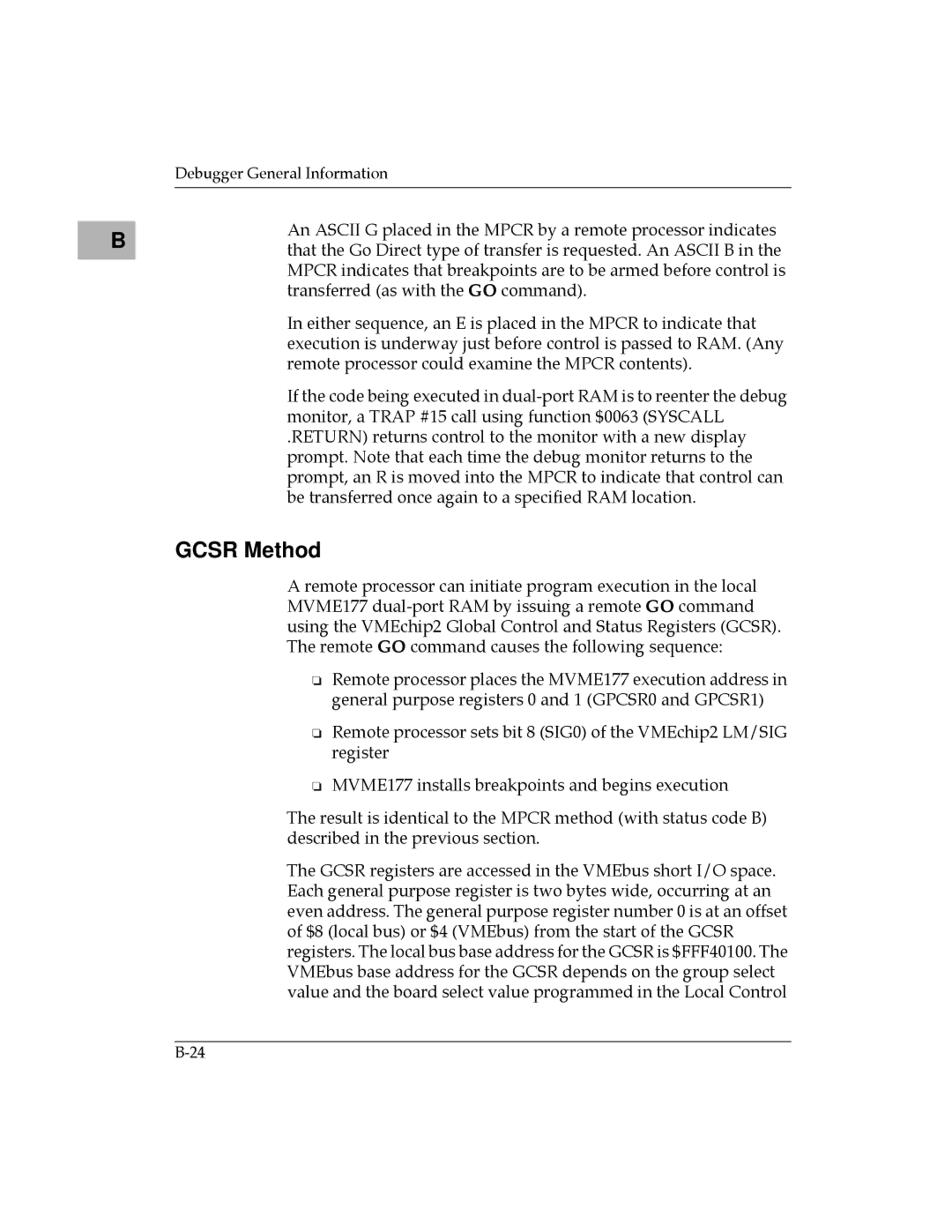
B |
Debugger General Information
An ASCII G placed in the MPCR by a remote processor indicates that the Go Direct type of transfer is requested. An ASCII B in the MPCR indicates that breakpoints are to be armed before control is transferred (as with the GO command).
In either sequence, an E is placed in the MPCR to indicate that execution is underway just before control is passed to RAM. (Any remote processor could examine the MPCR contents).
If the code being executed in
.RETURN) returns control to the monitor with a new display prompt. Note that each time the debug monitor returns to the prompt, an R is moved into the MPCR to indicate that control can be transferred once again to a specified RAM location.
GCSR Method
A remote processor can initiate program execution in the local MVME177
❏Remote processor places the MVME177 execution address in general purpose registers 0 and 1 (GPCSR0 and GPCSR1)
❏Remote processor sets bit 8 (SIG0) of the VMEchip2 LM/SIG register
❏MVME177 installs breakpoints and begins execution
The result is identical to the MPCR method (with status code B) described in the previous section.
The GCSR registers are accessed in the VMEbus short I/O space. Each general purpose register is two bytes wide, occurring at an even address. The general purpose register number 0 is at an offset of $8 (local bus) or $4 (VMEbus) from the start of the GCSR registers. The local bus base address for the GCSR is $FFF40100. The VMEbus base address for the GCSR depends on the group select value and the board select value programmed in the Local Control
